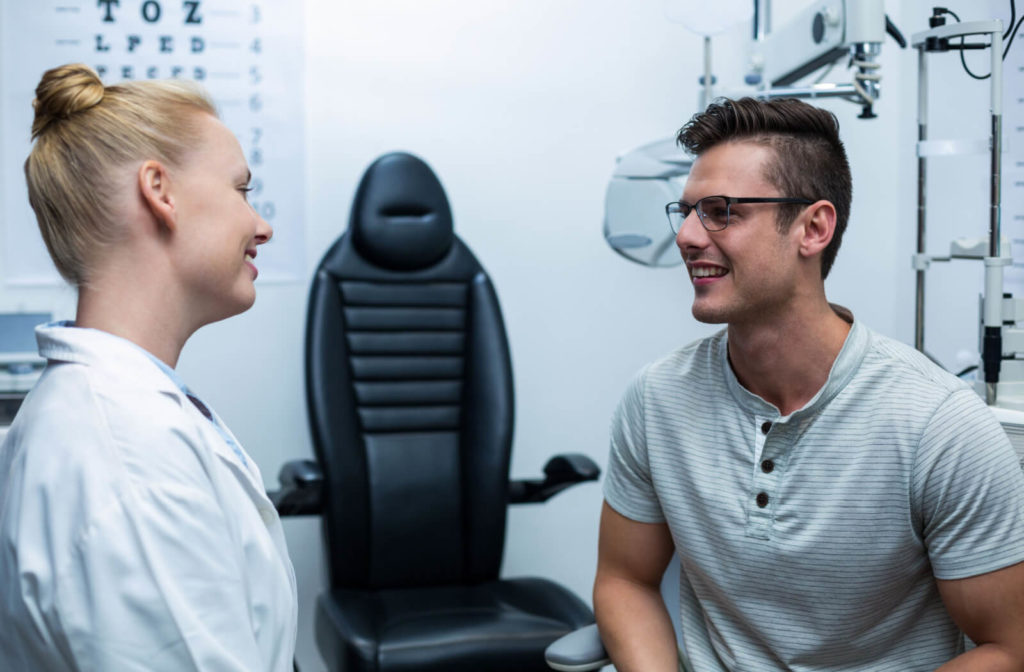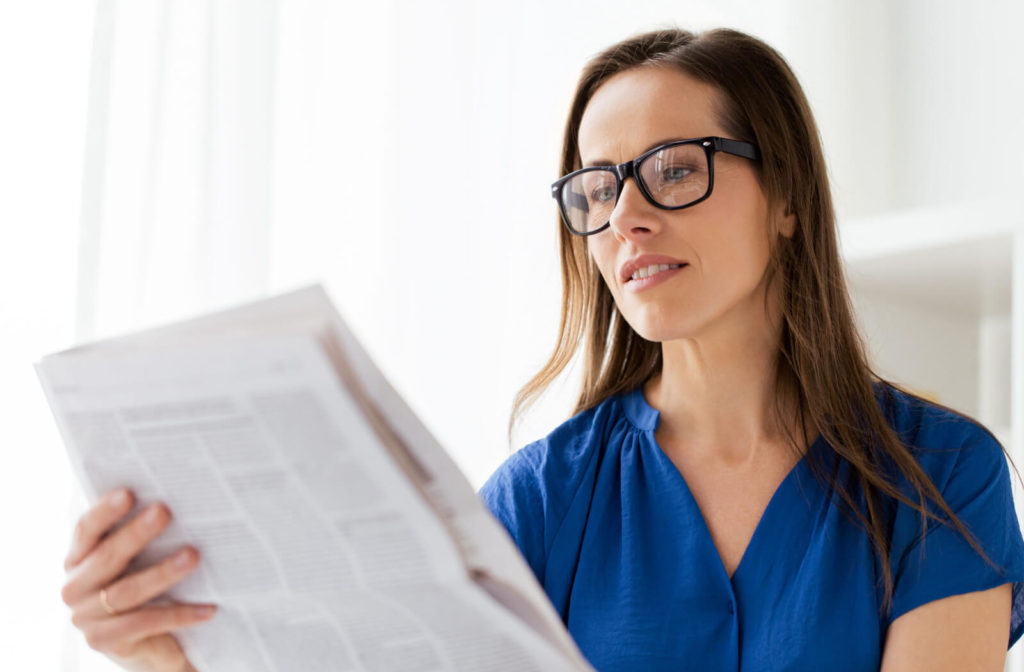Our eyes naturally change as we age, and these changes can affect our ability to see things up close. This common condition is known as presbyopia, and it’s typically the main reason why people start to need reading glasses around the ages of 35–45. Reading glasses are specifically designed to aid an individual’s close-up vision and are often available with several different types of lens and frame styles.
It’s also possible to get prescription reading glasses that are customized with your unique prescription. Prescription reading glasses can help you get clear, comfortable vision regardless of underlying refractive errors like farsightedness or astigmatism.
You’ll have to discuss prescription reading glasses with your optometrist, though. You will typically need a valid prescription before you can get them, which means you’ll need to book a comprehensive eye exam.
How Are Reading Glasses Different?
Reading glasses are designed to help people who have difficulty reading small print or seeing small objects up close. They magnify text or objects, helping make them more comfortable to see. Reading glasses are also sometimes known as “magnifying glasses” or “readers.”
You don’t usually need a prescription for reading glasses, and they are available in many places, like online stores, pharmacies, and optical shops.
Who Should Wear Reading Glasses?
Reading glasses are designed specifically for people who have trouble focusing their eyes on nearby objects, which is a challenge often caused by a condition known as presbyopia. Presbyopia is a natural part of aging that usually first appears around the age of 40.
Reading glasses may be right for you if you’re finding that you’re holding books, menus, or your phone further away from your face than you used to. They can help bring close objects and text into sharper focus, making your day-to-day life a bit easier and your reading experience more enjoyable.
Which Type of Reading Glasses Should You Wear?
The shape and size of the reading glasses you select can make a tremendous difference in your comfort while reading. Reading glasses come in several shapes, including round, oval, rectangle, and cat-eye frames. Think about choosing a shape that complements your facial features or fits your personal style.
The size of the lenses also plays a role in comfort. Larger lenses can provide a wider field of vision, helping you read with ease. Another factor you should consider is the type of lens you need for your glasses—some reading glasses come with bifocal lenses or tinted lenses, like sunglasses.
Traditional Reading Glasses
Traditional reading glasses are a common vision accessory for those whose distance vision is fine but who have difficulty reading or seeing small objects up close. They’re typically available in several different generic focal strengths or magnifications. There aren’t usually many options for customization with traditional reading glasses.
Bifocal Reading Glasses
Bifocal reading glasses are similar to traditional readers in many ways. One significant difference is that they have a bifocal separation and can be good options for people who have to go back and forth between reading up close and looking up and seeing something at a distance.
Like their traditional counterparts, a pair of bifocal readers will typically be available in several generic strengths for various vision needs.
Reading Sunglasses
Reading sunglasses could make a good option for someone who spends a lot of time reading outdoors. For example, reading sunglasses could be a great choice if you’re spending a long summer day reading at the beach.
When Should You Get Prescription Reading Glasses?
Prescription reading glasses can be an excellent choice for people who are affected by other vision conditions as well. They’re often specifically designed to help correct farsightedness, a condition also known as hyperopia, but they can also be tailored to meet the needs of those with presbyopia and myopia.
To get prescription reading glasses, you’ll need to book an eye exam with your optometrist and get an updated prescription if you don’t have one. When you visit us, we can tailor your prescription reading glasses to your needs based on your vision, lifestyle, and eye health.

Discuss Your Reading Options with an Eye Doctor
It might be time to consider getting yourself a pair of readers if you’re finding it hard to focus on objects nearby. But don’t just grab the first pair you see in the store. It’s important to choose a style that suits your face while also picking a lens type and focal strength that best serve your vision needs.
Prescription reading glasses could be just the ticket if you still find it hard to read with off-the-shelf readers. They can be custom-made to your individual needs and can make a world of difference for your reading and close-up work.
Contact us at Total Vision, and let us help you find one of our experienced optometrists near you. An eye doctor can provide you with recommendations on how to achieve clear, comfortable vision with solutions that fit your lifestyle.



